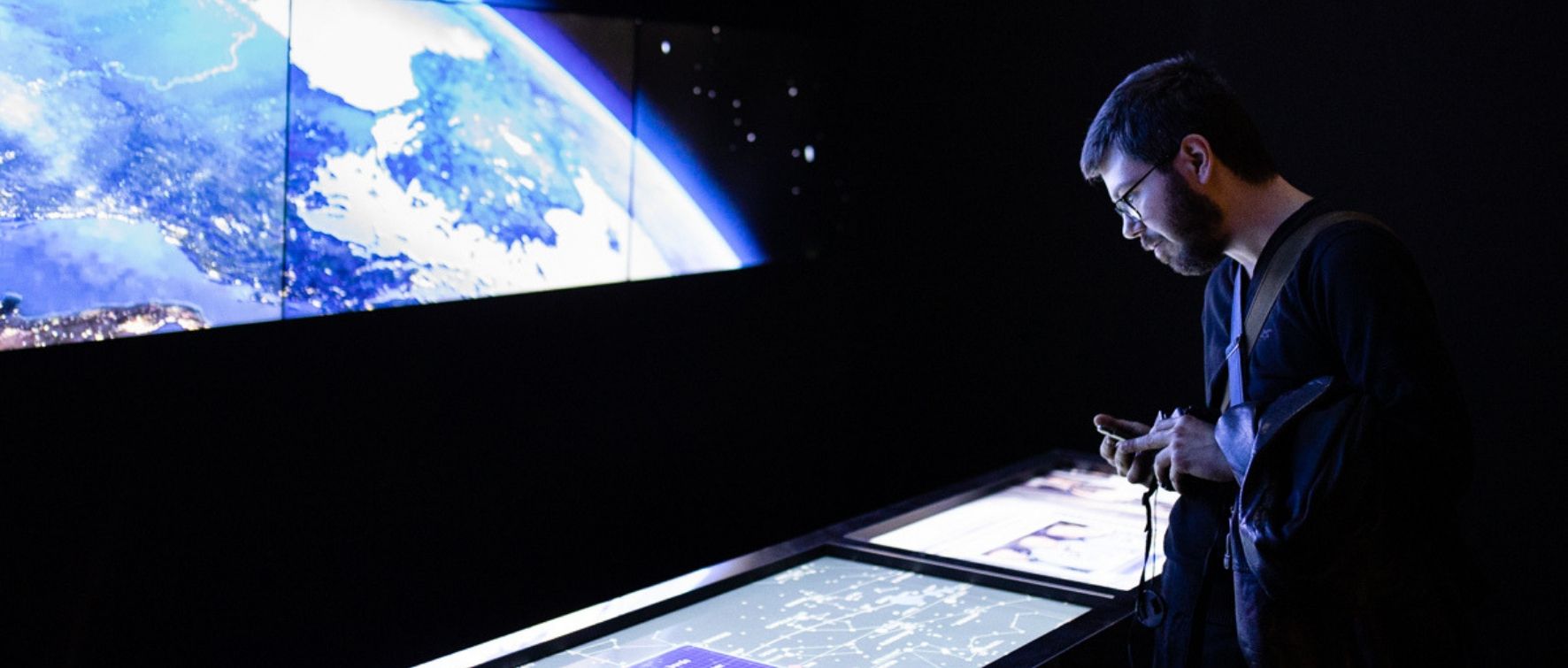Destination moon.
The future is now
We have all, at least once, imagined finding ourselves in cosmic space, wrapped in interstellar silence, moving weightlessly into the black void of the infinite.
For millennia man has fantasized about what the sky was, about what was up there, looking at stars and planets as destinations that could only be reached in the imagination.
For man, space travel outside the atmosphere has always been an impossible utopia, science fiction, the future speculation novel where it was unimportant whether the dream came true one day or not, because the pleasure came from the very act of imagining.
Then, one day…
In the night between July 20th and 21st, 1969, the whole world stopped to follow the event that would forever change the history of mankind.
At Cape Kennedy, on July 16, 1969, Saturn V, a rocket as tall as a 36-storey skyscraper – 111 meters high by 3,000 tons – took off from the 39A launch pad.
Four days later, Neil Armstrong was the first man to set foot on the moon.
The Apollo 11 Mission had achieved mankind’s oldest dream and represents the most exciting scientific event of the 20th century.
Over the centuries and since the dawn of civilization, the Moon has been the celestial body most studied by astronomers.
Our natural satellite dominated the ancient mythologies, in most cases, impersonating a benign divinity: it illuminated the dark shadows during the full moon, made it possible to accurately measure the passage of time and was crucial to navigation.
Space travel has irreversibly changed the perspective with which we see our planet. With the Apollo missions, for the first time, mankind saw the Earth from afar, with its own eyes, in its entirety, and saw it for the small celestial body that it is.
It was this totally new point of view that showed us how meagre and fragile our atmosphere is.
This cosmic perspective contributed to the birth of environmental movements, sowing the seeds of a collective sensibility that today, like never before, flourishes in consciences.
The future of this little blue grain that we all share, an oasis of life in the Universe, is more important than ever before, now that we are facing the consequences of global warming.
The UN has entrusted the world’s leading climatology experts with the task of drawing up a report on our planet’s state of health: we have only 10 years to save the Earth and run for shelter.
Will we be an interplanetary species then?
Will this be how we survive climate change?
Through a contemporary and technologically advanced audio-visual language, we will explore all the phases of the famous Apollo 11 mission up to its extraordinary conclusion: man’s descent onto lunar soil. 900 million people in front of televisions around the world lived through the most important media event ever, replicated here in a compelling and sensitive experience, suitable for any type of audience.
The heart of the exhibition are the rooms equipped with the most sophisticated technology currently on the market in the field of interactivity: Lighting Touch 7.0®,
which allows the walls to literally come to life: large 360° video projections shift, change and evolve in real time at the spectators’ touch. New pop up windows, graphics, galleries, virtual captions, historical insights, new images and everything imaginable come to life in a spectacular projection for an immersive and all-encompassing experience.
Large full-wall projections of high-definition audio-visual content will recount the historic 1969 moon landing event. The story in pictures of the Apollo 11 Mission is a starting point for exploring the relationship between human civilization and cosmic space.
What has the Moon represented over the centuries? Is reaching it just a dream? From the plane to the rocket, can the dream come true? Who will succeed in the ambitious enterprise between the two superpowers of the US and USSR? What did the moon landing represent in the history of science and humanity? What has replaced that “dream” in the collective imagination today? At what point is the conquest of Space today?
What is the role and destiny of Planet Earth and Man, today, in what we define as a space age?
The exhibition is not only intended as a commemorative moment, but also a chance to explore the present and above all, that near future that began with that historic event. Studies made possible by the evolution of space exploration have allowed us to highlight critical issues and problems that involve our planet, such as Global Warming and its dreaded serious consequences: the melting of glaciers, the risk of extinction of animals such as polar bears, the great climate disasters, etc.
Moving reportages shown in an immersive multi-projection on the whole wall are intended to involve the observer, with the aim of raising awareness on these important issues.
Traveling outside the atmosphere made it possible to study our planet better, observing it from a distance, thereby linking space exploration to our everyday lives.
The task of closing the exhibition has been left to the words of the famous scientist and astronomer Stephen Hawking: “I’m not denying the importance of combatting climate change and global warming, but we are running out of space and the only spaces to occupy are the other planets.” Around these touching words, a spectacular and all-encompassing Wunderkammer was created. A veritable room of wonders in which signs of the past connected to the study of the skies are exalted, by contrast, through the hypotheses on the future of our civilization.
The 6th edition of the exhibition is therefore entirely focused on the future, placing a special focus on the involvement of young people and the generations to come.
Today, 50 years later, the space race is starting again, with so many consequences to be discovered.

